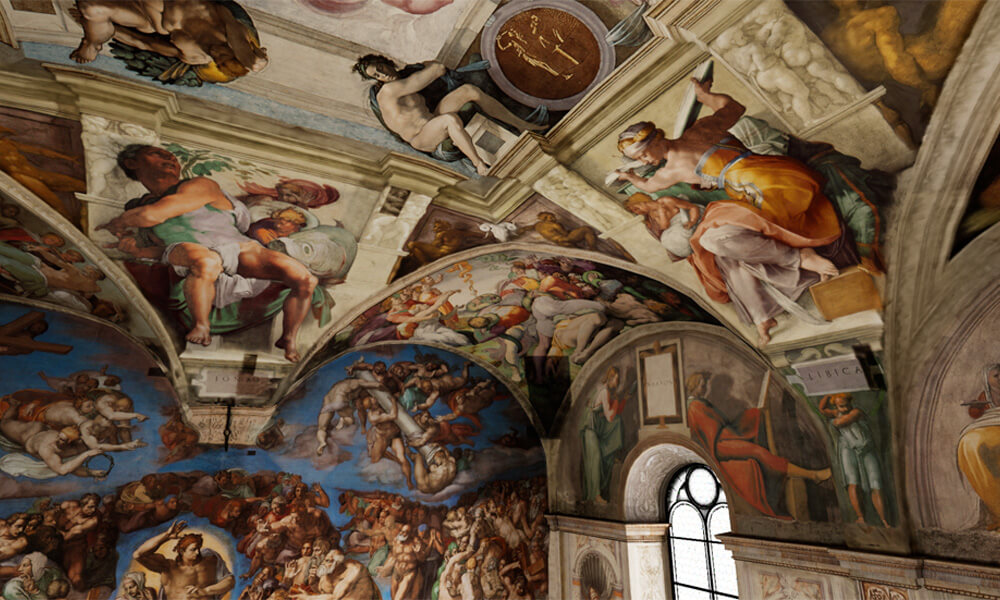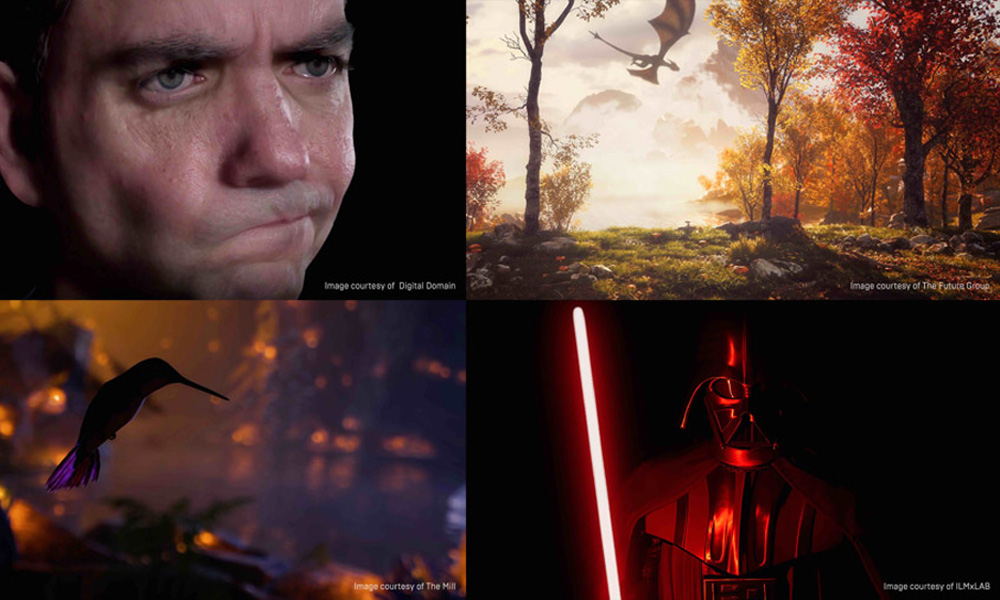Epic Games Unveils the Future of Production with Unreal Engine 4.23

Epic Games is at the SIGGRAPH 2019 conference in Los Angeles this week to reveal Unreal Engine features that are changing the art of filmmaking and enabling new virtual production techniques for final pixels in real time. Epic is also demonstrating and hosting sessions on photorealistic digital humans, advancements in ray tracing, augmented reality, virtual reality, visualization and live events technology.
Unreal Engine 4.23, available now as a preview release, brings even more advancements to real-time and virtual production workflows with multi-user editing, in-camera VFX, ray tracing improvements, the introduction of the anticipated Chaos physics and destruction tool (in beta), broader support for LED productions using nDisplay, and much more.
In-camera VFX: Filmmakers can now achieve final shots on set thanks to Unreal Engine and advancements in LED wall technology using out-of-the-box features. Filming live actors against photoreal digital backgrounds empowers filmmakers to capture completely realistic lighting, reflections, and effects — all in-camera, with little to no post-production.
Multi-user editor for virtual scouting: Enabling filmmakers to explore digital environments using VR headsets or computer screens, virtual sets have become a key aspect of virtual production that unlocks more creative decision-making earlier in the process. Using the upgraded multi-user editor, teams can collaborate within virtual environments to move objects, block actors, and compose shots, all in a visually accurate representation of a scene’s location, with changes synchronized across all users.
Support for Cinema 4D: Unreal Engine now supports Maxon’s Cinema 4D. Using the Datasmith plug-in as part of the Unreal Studio Beta, creators can natively import .c4d files directly into Unreal Engine with support for scene hierarchies, geometry, materials, lights, cameras, and baked animations. Cinema 4D’s “save for Cineware” command allows users to easily bake complex procedural motion graphics directly into real-time scenes through the Unreal Engine Sequencer cinematic editor.
Chaos physics and destruction (Beta): Unreal Engine’s new Chaos physics and destruction simulation system brings cinematic-quality visuals in real-time in scenes with massive-scale levels of destruction, delivering unprecedented artist control over content creation.
Niagara VFX improvements: Niagara particle systems can now be generated by the physics simulation in Chaos. Whenever an object fractures, users can generate smoke and dust, as well as more tiny fractured bits that enhance the physics simulation’s visuals. Niagara simulations can now also generate geometry that is used by reflections and shadows when ray tracing.
Ray tracing advancements: A number of performance and stability improvements are included in UE 4.23, including sampling improvements with Ray Tracer and Path Tracer, newly-supported geometry types and material types, and multi-view support for VR and split screens.
nDisplay: Users can now use nDisplay, the system for rendering imagery on multiple synchronized display devices, to project Unreal Engine content onto a wider variety of physical installations, including curved and spherical screens, and scenarios that involve complex blending between overlapping projections.
Microsoft HoloLens 2 Support: Developers building mixed reality experiences for HoloLens 2 now have production-ready support, complete with APIs for the platforms unique capabilities. Key features include streaming and native deployment, finger tracking, gesture recognition, meshing, voice input, spatial anchor pinning, and more.
Throughout the rest of this week, Epic booth #1319 will host a packed Unreal Engine demo and learning theater schedule, plus a series of Tech Talks taking place on Wednesday, July 31 in Room 405, covering Chaos physics and destruction, virtual production workflows, ray tracing, and in-camera VFX in Unreal Engine 4.23.

Visitors can also check out Epic Games Lead Technical Animator Chris Evans’ passion project, Il Divino: Michelangelo’s Sistine Ceiling in VR at the Immersive Pavillion.

For a full lineup of Epic’s activities at SIGGRAPH and additional details, visit: https://www.unrealengine.com/en-US/events/siggraph-2019
By: Mercedes Milligan

熱門頭條新聞
- Ventana Sur 2024: Official Selection
- Infinity Nikki hits 30 million pre-registrations ahead of launch later this year
- UNCLE CHOPS ROCKET SHOP LAUNCHES NEXT MONTH
- Industry legend Peter Molyneux joins NG25 Spring
- Lexar Introduces Professional Workflow 6-Bay Docking Station, Workflow Portable SSD, Workflow Reader Modules, and Three CFexpress 4.0 Cards
- The Next Generation Soul Game is Officially Released!
- QUERN DEVELOPERS JOIN FORCES WITH BLUE BRAIN GAMES FOR MYSTERIOUS NEW ADVENTURE DIMHAVEN ENIGMAS
- Announcing FMX 2025: Rhythm of Change
